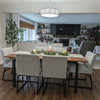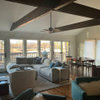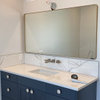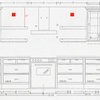Ralleia!
Jon1270
17 years ago
More Discussions
In another thread you mentioned that you're a 3rd year lighting engineering student, and that "...the indoctrination into lighting has had a profound impact into the way I view lighting in residences. I now hate almost all the pre-existing lights in my home."
It occurs to me that you're in a uniquely valuable position, having gained some expertise but still able to remember not understanding the differences between good lighting and bad. Would you mind saying more about what you've come to dislike about the pre-existing lighting in your house, and how you now see that it could be better?




ralleia
woodswell
Related Professionals
Walnut Creek Lighting · Warwick Lighting · Bronx Furniture & Accessories · Redmond Furniture & Accessories · Fallbrook Furniture & Accessories · Irmo Furniture & Accessories · Moraga Furniture & Accessories · Westport Furniture & Accessories · Baltimore Decks, Patios & Outdoor Enclosures · Beavercreek Decks, Patios & Outdoor Enclosures · Del Aire Decks, Patios & Outdoor Enclosures · Owings Mills Decks, Patios & Outdoor Enclosures · Statesville Decks, Patios & Outdoor Enclosures · Watauga Decks, Patios & Outdoor Enclosures · Highland Decks, Patios & Outdoor EnclosuresJon1270Original Author